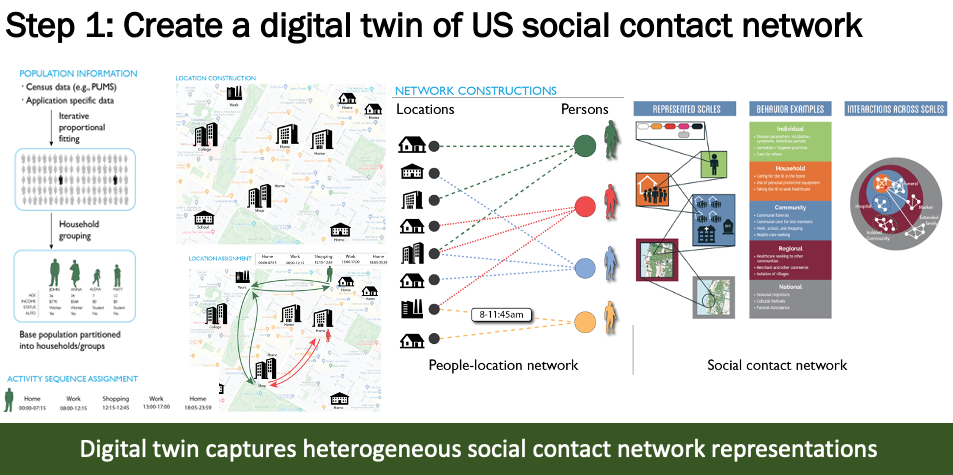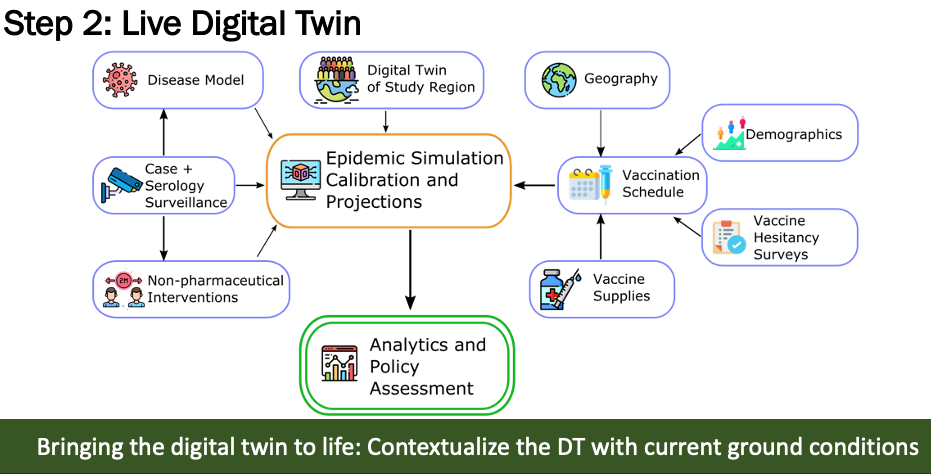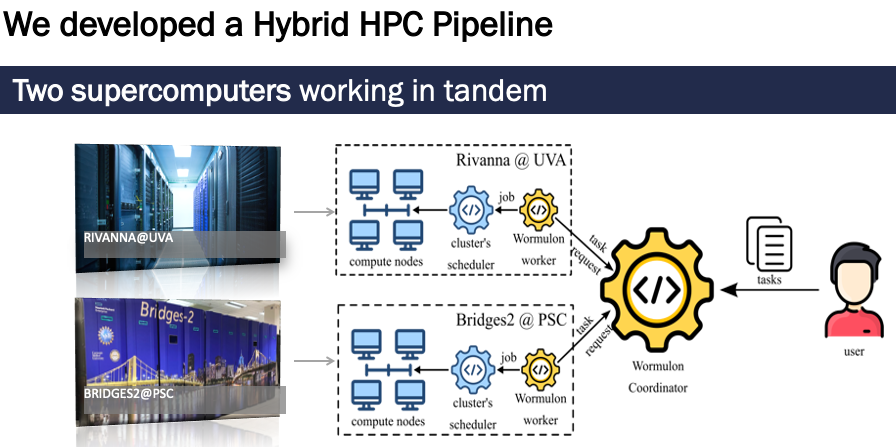NSSAC Research
Supporting Collaborative Research
We developed an integrated, data-driven operational pipeline based on national agent-based models to support federal- and state-level pandemic planning and response. Through this pipeline, we were able to coordinate jobs across two HPC systems and amass, integrate, and organize COVID data across a number of governmental levels to power a digital twin of social connections in the US among 288 million individuals and billions of interactions.
Bhattacharya P, Chen J, Hoops S, Machi D, Lewis B, Venkatramanan S, Wilson M, Klahn B, Adiga A, Hurt B, Outten J, Adiga A, Warren A, Baek H, Porebski P, Marathe A, Xie D, Swarup S, Vullikanti A, Mortveit H, Eubank S, Barrett C, Marathe M. Data-driven scalable pipeline using national agent-based models for real-time pandemic response and decision support. International Conference for High Performance Computing, Networking, Storage, and Analysis 2021 (SC21). To appear in The International Journal of High Performance Computing Applications (IJHPCA), 2022. Article about the prize in Nature Computational Science.

In order to model these complex networks, we first need a mathematical way to model infrastructure, people, and interactions. We call this our digital twin. We test various situations and outcomes on the digital population, always being mindful of the inextricably linked and constantly co-evolving networks.

We then bring the digital twin to life, generating epidemic simulation projections by considering a spectrum of inputs and producing an analytics and policy assessment.

This massive effort requires the resources of two supercomputers working in tandem. We developed a hybrid HPC pipeline to successfully complete our simulations. Special thanks to the COVID-19 HPC Consortium, Pittsburgh Supercomputing Center, and UVA Research Computing.